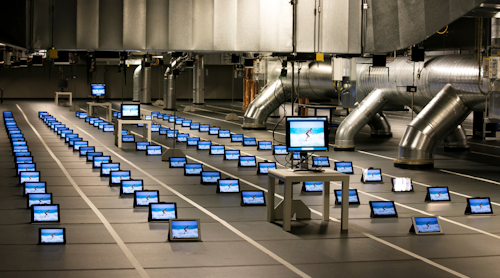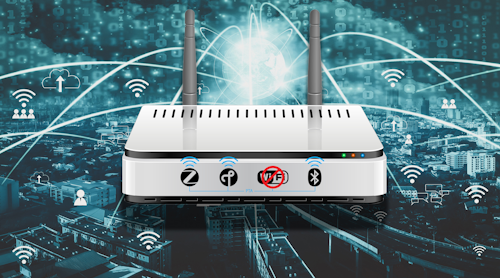What you’ll learn:
- An intro to Wi-Fi HaLow.
- What are the IEEE 802.11ah specifications?
If you have designed or are designing an Internet of Things system, you already know that its success will largely be determined by the wireless technology you choose. Selecting a wireless technology for an IoT project is hard enough given all available options. Adding another to the mix oftentimes only adds to the confusion. Well, maybe not.
Comparing all of the fine details of each technology helps you zero in on one that best meets your needs. Sometimes not all requirements are perfectly met, though, and the resulting system will be somewhat compromised. So having another option may be a good thing. Here’s a new one to consider.
HaLow
This relatively new choice is a Wi-Fi variant that’s particularly attractive for long-range wireless links. Most of the popular IoT products and systems use Bluetooth Low Energy (BLE), Zigbee, or others that have a maximum range of about 10 meters in most applications.
However, some apps require a longer-range link. Remote sensors, warehouses, or other rural uses are examples. Electrical power metering and sending compressed video represent other possibilities. Only a few IoT wireless technologies provide longer-range capability. This new option may turn into a better choice for your optimized application.
这项技术称为HaLow,或其IEEE standard name, 802.11ah. Thus, HaLow is a variant of Wi-Fi. The standard has been available for several years now, but there was little interest.
One feature of HaLow is the recent establishment of a certification program by the Wi-Fi Alliance. The Alliance thoroughly tests chips and modules to ensure that all manufactured products will be compatible. This interoperability feature is what makes Wi-Fi so attractive. With the Wi-Fi Alliance’s blessing, HaLow should see some adoptions.
What makes HaLow so attractive besides the Wi-Fi heritage and certification? Here’s a short list of the key features:
- HaLow operates in the industrial, scientific and medical (ISM) bands below 1 GHz. This gives HaLow a range advantage over typical 2.4- and 5-GHz bands used by all other Wi-Fi versions. A range up to 1 km is possible under the right conditions.
- The sub-1-GHz signals also penetrate obstacles better than the higher frequencies, making the link more flexible and reliable.
- Low-power operation with multiple power-saving modes. Coin-cell operation is possible.
- The latest in Wi-Fi security: WPA3.
- No need for proprietary hubs or gateways.
- OFDM modulation, 56 subcarriers—52 of which are for data using BPSK, QPSK, 16-QAM, 64-QAM, or 256-QAM.
- Flexible channel sizes of 1, 2, 4, 8, and 16 MHz provides flexibility in data rates.
- 26 channels are possible, with each providing a 100-kb/s data rate.
Low power consumption is a must in most IoT applications. The 11ah covers all bases with low power and multiple sleep and wake-up modes. Battery operation is one major design target.
One More Thing….
Another option available to you isIEEE 802.11af. This standard is similar to 802.11ah, but it’s designed to operate in the TV white spaces. They comprise the unused 6-MHz TV channels in the 54- to 790-MHz range that can be used for data applications. It’s not Wi-Fi certified and hasn’t been widely used. It’s a good option for the white spaces and is compatible with the necessary channel sharing using cognitive radio techniques.
Have fun with your next wireless technology selection.


















